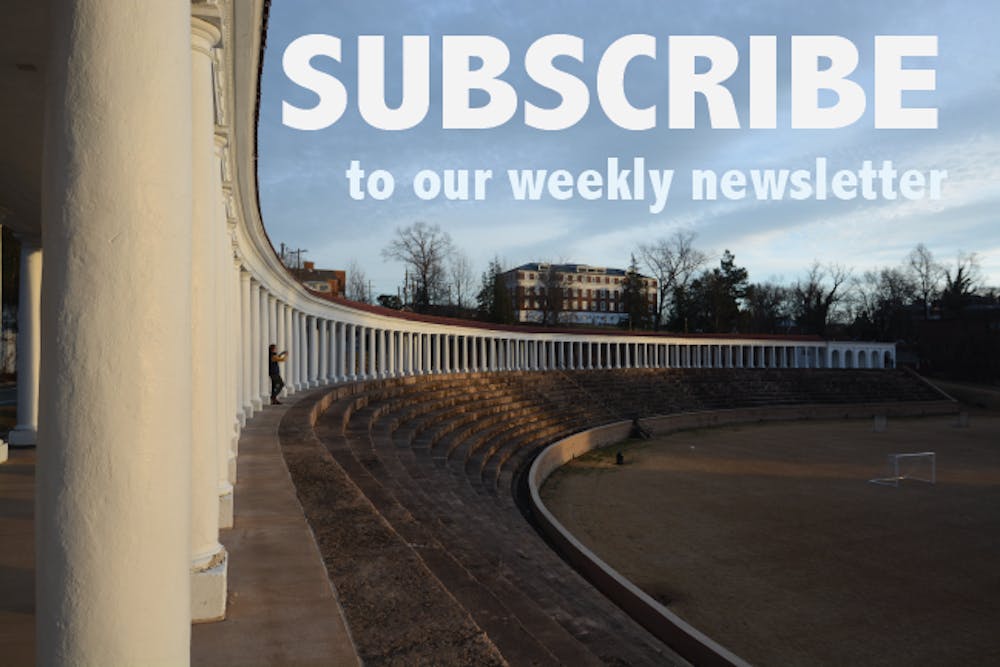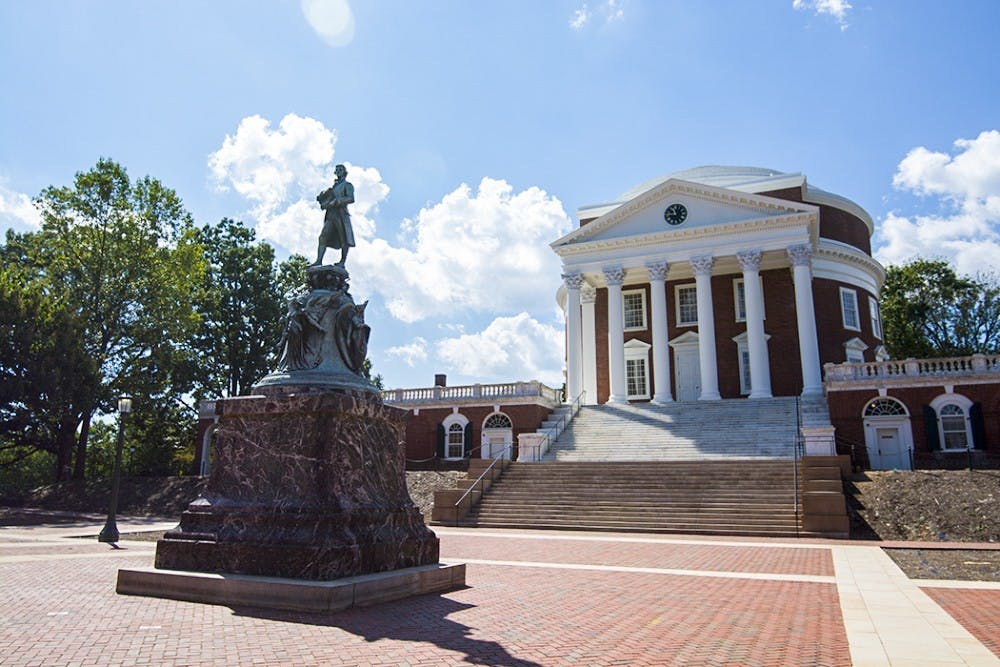The Deans Working Group has presented a final report from the Advisory Committee on the Future of the Historic Landscape at the University to President Teresa Sullivan, according to a University-wide email from Risa Goluboff, Dean of the Law School and chair of the Deans Working Group, Tuesday morning.
The committee’s report outlines principles and suggestions for planning and assessing physical spaces and historic symbols at the University.
The announcement of the report was included in a final update of the working group’s goals and accomplishments throughout the past semester.
The Deans Working Group established the nine-member Advisory Committee on the Future of the Historic Landscape at the University in October, co-chaired by President Emeritus John Casteen and Claudrena Harold, a professor of African American and African Studies and History. The committee was charged with creating “principles and make recommendations about the display of visible historic symbols on Grounds” while maintaining awareness of the University’s imperfect history and “contemporary commitments to both diversity and free expression.”
The Committee hosted a public input session in January to gather opinions from the University community on the significance of visible historic symbols around Grounds for their written analysis.
Sullivan created the Deans Working Group following the white supremacist rallies of Aug. 11 and 12. The group was charged with assessing and leading the University’s response to the events and proposing changes to current policy structures.
“We have continued to make and see progress along all three aspects of our work: safety and security, living our values, and marshalling our intellectual resources to help us understand and respond to last August’s events,” Goluboff wrote in the email Tuesday.
The committee’s report provides principles for considering future additions to the historic landscape of the University, the contextualization of existing spaces or memorials, as well as the potential removal or alteration of others. It also calls for the use of technology and new methods to teach broader audiences.
Two underlying ethos were articulated in the report. The first was “Grounds are an environment for both learning and living,” acknowledging its difficult histories while also promoting an inclusive and shared learning space today. Second, that “history is layered” — by layering the environment, the University can show the progress of history without erasing the past.
The report also focused on the University’s landscape as a place of learning and living that should “advance students’ safety, power, and happiness.” The report acknowledged that living and learning in a historical landscapes that memorialize certain individuals and cultures “may prove to be more difficult for some than for others.” The report called for the presentation of the “University’s physical identity” in a fully informed, honest and candid manner.
While acknowledging how to assess existing features and spaces at the University, the report also argued certain aspects are missing, including the commemoration of “change agents.”
“Change and its agents, persons who have caused or led the University to reinvent itself, ought to be appropriately celebrated,” the report reads.
The report specifically outlined desegregation and the admission of female undergraduate students as major indicators of the University’s progress into the modern era and called for the memorialization of individuals central to those times — such as the four women first admitted to the University after filing a lawsuit for entry and Walter Ridley, the first African American graduate of the University.
The report did not, however, weigh in on specific symbols on Grounds, such as statues or plaques. The statue of Thomas Jefferson in front of the Rotunda was the center of several protests during the year and a statue of Jefferson was spray painted during the commemoration of Founder’s Day. The University also removed plaques honoring confederate soldiers from the Rotunda in September.

The report ended on the need for collaboration in developing the representations of history on Grounds and recommended the creation of a permanent committee on the future of the historical landscape which would meet biannually to discuss unresolved and new issues with active input from the University community. To maintain such community engagement, the report called for regular annual or semiannual public forums to seek the opinions of those who live and work on Grounds on a day to day basis.
“Students and visitors should encounter evidences of what we value, and perhaps also of what we aspire to do,” the report states. “This requires active and sustained public input.”







